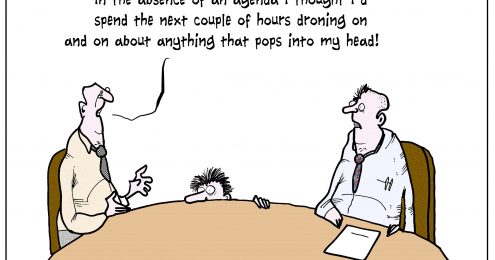Last week I asserted that the best sign of a healthy nonprofit is a healthy partnership between the Board Chair and the CEO. I wrote:
“Shared leadership with an invested thought partner with leadership skills can cut so many challenges off at the pass and propel your organization toward the fulfillment of your mission more quickly, more clearly, and more strategically.”
If you haven’t already, go read last week’s post. I’ll wait for you. When you finish, come right back. Just click on this link:
What’s the Single Best Sign of a Healthy Nonprofit?
Welcome back!
So a few weeks ago, I helped a client (an Executive Director) prepare for an upcoming board meeting. There was lots of great program information, but some challenging financials to report. The meeting was scheduled for two hours, so we planned a 15-20 minute executive director report.
Cut to the board meeting. The Board Chair hadn’t prepared any sort of agenda whatsoever. After a bit, my client indicates that he should probably give his report.
“OK,” says the Board Chair with some serious attitude. “You have 120 seconds.”
What does a “five star” Board Chair look like?
Let’s just say that while my client made the very best of a bad situation, the meeting did not go uphill from there.
But let’s be clear. It’s not just about the Board Chair. It’s about the relationship.
So let’s talk about this. How can and Executive Director and a Board Chair build an amazing relationship?
FIRST, YOU NEED TO KNOW YOU NEED ONE
I was working with another client approaching a change in board leadership with trepidation. “I think this new one is actually going to do stuff,” she said. “My last Board Chair left me alone and that’s just how I like it.”
Gasp. A Board Chair that does stuff. I needed to know more. The incoming Board Chair asked me for some coaching and I found him to be strategic, thoughtful, and completely passionate about the mission. In addition, he has a plan to ask each and every board member for an annual contribution and even showed me a spreadsheet of the total he plans to raise just from the board alone.
I reported back to the CEO. “Doing stuff” does not have to mean “meddling.” She got it. And I’m happy to report that this particular Board Chair/CEO partnership has become one of the best I’ve seen.
So how did they get there?
FIVE KEY ELEMENTS TO A SUCCESSFUL BOARD CHAIR-CEO PARTNERSHIP
As you read these, rank each one from 1 to 5 against your own experience at your nonprofit, where a 1 = “completely dysfunctional” and a 5 = “perfect… couldn’t possibly be any better.”
If you’re seeing all 4’s and 5’s, congratulations!
But, if not, start to think about ways to improve these. The first step is to acknowledge and understand the problem.
So, without any further ado…
1) Board Chair and CEO are both crazy about the organization. Their shared passion for the organization drives them to spend a whole lot of time having strategic, sometimes difficult conversations in order to propel the board and the staff forward with a eye firmly planted on the mission.
2) Board Chair actually wants and understands the job. If this is true, then the Board Chair will make the time to talk to board members, to raise money, to steer committee chairs in the right direction, to recruit great new board members, and to work with the CEO.
3) Chair and CEO plan Executive Committee calls together. Two weeks prior to each Executive Committee call, a weekly call should be dedicated to the agenda for this meeting. Way way too often, this meeting is simply a CEO monologue. If Executive Committee members are not asked their opinions about something, they will just stay on mute.
How to Build an Effective Executive Committee
4) Chair and CEO plan Board Meetings together. Both the CEO and the Board Chair should have goals. What does the board need to know, what do they need to weigh in on, how can the meeting best engage them.
5) Chair and CEO meet weekly. Nonnegotiable. The CEO sends agenda the day before. The Board Chair should make it clear that she does not attend meetings without agendas. The agenda should not just be on the fly. CEOs will say they talk to their board chairs all the time. But once a week, there should be an intentional conversation with an agenda.
A SAMPLE WEEKLY MEETING AGENDA
This meeting should not be a monologue and should include:
- CEO anxiety. Discussion about something the CEO is worried about that can be problem solved together.
- Personnel. Both on the board and staff side. New hires, open positions, challenges, board recruitment.
- Fundraising. Not just how the staff and board are doing, but any requests CEO has for the Board Chair
- Sector education. Give Board Chair some info about the “movement” or the sector to keep her up to speed on the context in which the work is being done.
- Financials. Quick finance update and any red flags.
- Key priorities. Each partner shares key priorities for the week.
- Action items. Meeting ends and an email is sent RIGHT AFTER THE MEETING with any action items that each has committed to – I like to call that shared accountability.
IF IT’S ALL ABOUT THIS PARTNERSHIP, THEN…..
Maybe, just maybe, high end funders (corporate, foundations, individuals) should, from time to time, ask to meet the CEO and the Board Chair together.
Maybe, just maybe, the CEO or Development Director should invite the Board Chair along to an ask, to a cultivation, to an exploratory discussion with a funder.
Maybe, just maybe, foundations should ask that the Board Chair be available during a site visit, in person or by phone.
And maybe, just maybe, boards will spend just a bit more time thinking about the leadership pipeline.
How to Select First Rate Board Members
********************************
If you like what you read here, please click here to subscribe. You’ll be notified by email when there’s fresh content.




I would rank the board 1. They are not aware of their powers. The Chair and the Executive Director are best of friends – friendship comes before organization. The board has no clue on how the the staff are frustrated, and the ones those who know,t told the staff that ” I really don’t know how I can help you”. They never show up on major events and have never been trained. They have never participated on fundraising events, never evaluated the ED god knows for how long. The past president even said that she did not know that she had to evaluate the ED. There is no strategic planning and I can go on and on. If anyone is surprised how this org. is functioning — it is pure luck at this time and if steps are not take, this org. will be gone and the wonderful work that this org. does for the community and something that is of real need to the community will be gone, because of a very good relationship that the ED has with the Board ( i,e. saying ok and yess to everything and not questioning the ED on anything she does). So you see, it is not always that an org. is in trouble because the Board and the ED does not see eye to eye. Sometimes when friendship becomes a priority before the org. and the Board does not question the ED and the ED does not listen to the staff and their frustration.
Thanks for this Joan. I immediately wrote my board chair with this link. I am fortunate to have a great board chair, who has a dedicated and long term relationship with our agency. We do need to meet more frequently and I invited her to do that. Great reminder. And I don’t do ANY meeting without an agenda. That’s crazy.
Once a week?
Surely that depends on the scale of the operation and size of budget? That in my opinion – for the average charity employing less than 20 staff, is punishment, not an effective relationship between two capable individuals who should be relating on a strategic level. Surely the job of a decent Chair is to manage the work of the Board, oversee the strategy, glad hand the stakeholders, and – once appointed – let the CEO manage the organisation to an agreed set of objectives and performance measures?
Dear Rob. Thanks for the comment and for pushing back. I never considered meetings with my board chairs to be punishment and I had weekly meetings when my org was at 20 staff and also at 45 staff members. Sometimes our meetings were short; sometimes she helped me untangle a knot and sometimes we worked together to chat about board committees that were not delivering. I use weekly as a benchmark and perhaps to be provocative for some. Biweekly would be ok but the point is REGULAR MEETINGS. And based on board chair schedules, weekly often becomes biweekly. Lastly, the meeting is to replace the comment I hear often “Oh, we don’t need regular meetings; I talk to my board chair almost every day.” I’m guessing that would be a whole new level of punishment for you Rob !! 🙂